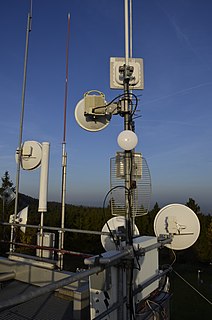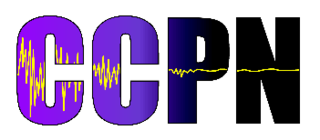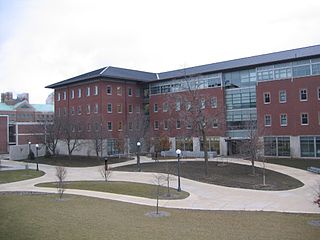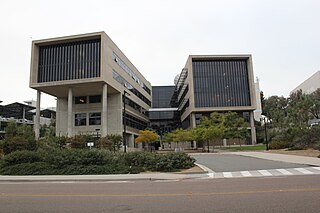 W
WThe AMPRNet or Network 44 is used in amateur radio for packet radio and digital communications between computer networks managed by amateur radio operators. Like other amateur radio frequency allocations, an IP range of 44.0.0.0/8 was provided in 1981 for Amateur Radio Digital Communications and self-administered by radio amateurs. In 2001, undocumented and dual-use of 44.0.0.0/8 as an internet telescope began, recording the spread of the Code Red II worm in July 2001. In mid-2019, part of IPv4 range was sold off for conventional use, due to IPv4 address exhaustion.
 W
WThe AMPRNet or Network 44 is used in amateur radio for packet radio and digital communications between computer networks managed by amateur radio operators. Like other amateur radio frequency allocations, an IP range of 44.0.0.0/8 was provided in 1981 for Amateur Radio Digital Communications and self-administered by radio amateurs. In 2001, undocumented and dual-use of 44.0.0.0/8 as an internet telescope began, recording the spread of the Code Red II worm in July 2001. In mid-2019, part of IPv4 range was sold off for conventional use, due to IPv4 address exhaustion.
 W
WThe Collaborative Computing Project for NMR (CCPN) is a project that aims to bring together computational aspects of the scientific community involved in NMR spectroscopy, especially those who work in the field of protein NMR. The general aims are to link new and existing NMR software via a common data standard and provide a forum within the community for the discussion of NMR software and the scientific methods it supports. CCPN was initially started in 1999 in the United Kingdom but collaborates with NMR and software development groups worldwide.
 W
WProfessor Anthony John Grenville Hey was Vice-President of Microsoft Research Connections, a division of Microsoft Research, until his departure in 2014.
 W
WThe iPlant Collaborative, recently renamed Cyverse, is a virtual organization created by a cooperative agreement funded by the US National Science Foundation (NSF) to create cyberinfrastructure for the plant sciences (botany). The NSF compared cyberinfrastructure to physical infrastructure, "... the distributed computer, information and communication technologies combined with the personnel and integrating components that provide a long-term platform to empower the modern scientific research endeavor". In September 2013 it was announced that the National Science Foundation had renewed iPlant's funding for a second 5-year term with an expansion of scope to all non-human life science research.
 W
WThe Large Hadron Collider (LHC) is the world's largest and highest-energy particle collider and the largest machine in the world. It was built by the European Organization for Nuclear Research (CERN) between 1998 and 2008 in collaboration with over 10,000 scientists and hundreds of universities and laboratories, as well as more than 100 countries. It lies in a tunnel 27 kilometres (17 mi) in circumference and as deep as 175 metres (574 ft) beneath the France–Switzerland border near Geneva.
 W
WThe National Center for Supercomputing Applications (NCSA) is a state-federal partnership to develop and deploy national-scale cyberinfrastructure that advances research, science and engineering based in the United States of America. NCSA operates as a unit of the University of Illinois at Urbana–Champaign, and provides high-performance computing resources to researchers across the country. Support for NCSA comes from the National Science Foundation, the state of Illinois, the University of Illinois, business and industry partners, and other federal agencies.
 W
WThe San Diego Supercomputer Center (SDSC) is an organized research unit of the University of California, San Diego (UCSD). SDSC is located at the UCSD campus' Eleanor Roosevelt College east end, immediately north the Hopkins Parking Structure.
 W
WThe AMPRNet or Network 44 is used in amateur radio for packet radio and digital communications between computer networks managed by amateur radio operators. Like other amateur radio frequency allocations, an IP range of 44.0.0.0/8 was provided in 1981 for Amateur Radio Digital Communications and self-administered by radio amateurs. In 2001, undocumented and dual-use of 44.0.0.0/8 as an internet telescope began, recording the spread of the Code Red II worm in July 2001. In mid-2019, part of IPv4 range was sold off for conventional use, due to IPv4 address exhaustion.
 W
WThe AMPRNet or Network 44 is used in amateur radio for packet radio and digital communications between computer networks managed by amateur radio operators. Like other amateur radio frequency allocations, an IP range of 44.0.0.0/8 was provided in 1981 for Amateur Radio Digital Communications and self-administered by radio amateurs. In 2001, undocumented and dual-use of 44.0.0.0/8 as an internet telescope began, recording the spread of the Code Red II worm in July 2001. In mid-2019, part of IPv4 range was sold off for conventional use, due to IPv4 address exhaustion.
 W
WThe AMPRNet or Network 44 is used in amateur radio for packet radio and digital communications between computer networks managed by amateur radio operators. Like other amateur radio frequency allocations, an IP range of 44.0.0.0/8 was provided in 1981 for Amateur Radio Digital Communications and self-administered by radio amateurs. In 2001, undocumented and dual-use of 44.0.0.0/8 as an internet telescope began, recording the spread of the Code Red II worm in July 2001. In mid-2019, part of IPv4 range was sold off for conventional use, due to IPv4 address exhaustion.